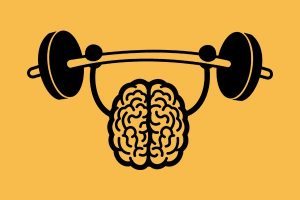With any luck we will all get “old”, some older than others, “oldest old” – 80 plus.
Our physiological processes become increasingly ineffectual from our early fifties onwards. The speed of onset of senescence is notably variable: the fitter, the slower the decline, and that counts for both mind and matter. The old adage “use it or lose it” is universally true – a biological axiom.
A good set of genes helps.
But, however well exercised your brain and body might be, there will always be threats which could seriously spoil the overall effect. The problem is knowing what these threats are exactly. You might have already clocked some – excess alcohol? extra weight? escalating blood pressure?
By now, all of us will have been made aware of the very real threat of dementia – the express route to senility, sans everything.
It is arguable that, if we should live long enough, we would all develop signs and symptoms of one of a selection of different dementias, the most common being Alzheimer’s – a close second, vascular – or an admixture of both.
So we are living longer. In 1900, the UK life expectancy was 44 for males and 48 for females. In 2015, life expectancy was 79.1 for males, 82.8 for females. Today, in the ward of Hans Town, Chelsea – males 96, females 93; Glasgow City – males 73.4, females 76.6.
It is unfortunate that poor cognitive function is closely associated with low socio-economic status at early age. In particular, low educational level is strongly associated with increased risk of Alzheimer’s disease and attendant dementia. Conversely, an education lasting longer than eight years, and a subsequent occupation involving complex mental activity gives rise to a high “cognitive reserve”, gifting the brain the capability to withstand the onslaught of the pathological cellular changes associated with dementia and older age.
The antipathetic impacts of chance, however, are not irremediable, and certainly all the older population at risk of developing dementia can take effective evasive action.
Do we know what these avoidance tactics may be? Yes – a number of “midlife risk factors” have been accurately identified, all of which can be modified. Broadly, these fall into the following categories (in no particular order):
- • Obesity
- • High blood pressure
- • Depression
- • Physical inactivity
- • Current smoking
- • Diabetes
- • Lack of mental activities
Rather obviously, the more risks at midlife, the greater the chances are of developing dementia in older age. All of these risks are easily modifiable at midlife through exercising your body, brain and, above all, your willpower – with some help from a doctor when necessary.
The problem in stemming the only too real dementia “epidemic” is in persuading you, the public, to do something to help: just a smidgen of effort could make an extraordinary difference.
These seven “modifiable risk factors” all tend to be inter-related, as you will have noted, and they are all also associated with early death, let alone dementia. They are proven and incontrovertible.
But research continues apace, and there are a number of modifiable risk factors which await academic confirmation. These include:
• Poor dietary intake (“Mediterranean” is good)
• Lack of Vitamins B and D (essential for brain health)
• Testosterone deficiency (increases from age 30)
• High cholesterol (genes and diet)
• Social isolation (get out and about)
• Midlife hearing loss (you might not have noticed)
• Sleep deprivation (age, aches and pains, blue screens)
• Kidney failure (you probably do not know)
• Coronary heart disease (you don’t want to learn by experience)
• Atrial fibrillation (you should already know, but feel your pulse)
• Stroke (as you know, a hard hit to the head)
• High homocysteine level (an important cause of arterial disease)
• Excessive alcohol intake (light to moderate daily drinking is beneficial)
• Abnormal thyroid function (more and less)
• Chronic head trauma (e.g. boxing)
But the headline message remains –
35% of dementia could be prevented by modifying the proven risk factors.
The comprehensive WellMan Clinic Dementia Defence Screen can identify known modifiable risk factors at midlife and can help you to formulate a coherent plan for your future brain and body health. For further information, please contact the WellMan Clinic.
020 7637 2018
Reference
“The effect of midlife risk factors on dementia in older age”, Public Health England and London School of Economics and Political Science, March 2017.






